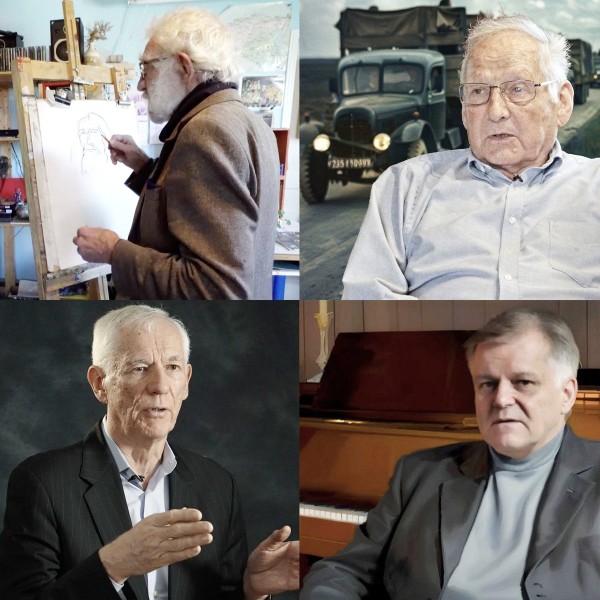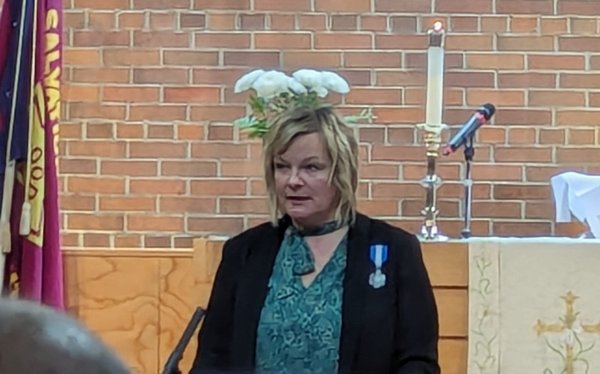
The discussion surrounding the parties involved brought to light the fact that EHL did not have a specific set of guidelines or conflict of interest policy statement in place. Shareholders may have understood that board directors were regulated by generally accepted corporate governance and standards. However, others questioning possible conflicts of interest affecting board members may have anticipated that a director would recuse themselves from a process just to steer clear of any such perceptions. Since that instance, no directors have declared any conflicts and no one has removed themselves from any decision processes because of a perceived conflict. That might change.
Since their last meeting, board members and others performing duties for the board were presented with new protocols outlining EHL’s proposed conflict of interest policies. Those policies have now been adopted. However, in addition to standard guidelines in relation to declaring and reporting actual or potential conflicts, there is interesting language and weight put on “perceived conflicts.” The policy, which is provided below, states: “the issue of Perceived Conflicts of Interest will often be more problematic than the issue of Actual or Potential Conflicts.”
Viewing “perceived conflicts” as “more problematic” than “actual or potential conflicts” may be most problematic for board members who find themselves at odds with their fellow members or questioning the direction of the corporation. If a director has a difference of opinion or is working to ensure that all options are exhausted and reviewed diligently before an action is taken, other directors might view this as overly bothersome and look to cite a “perceived conflict” in order to advance their agenda. No board will ever have directors thinking the same way all the time. Most shareholders rely on directors to have different skill sets and healthy debates before voting to take an action. But if debate within the board can be shortened or even muted because 5 out of 9 or 6 out of 11 directors deem 2 or 3 fellow members, or even one vocal member, to be slowing a process then all the majority has to do is “perceive” and vote to declare a conflict. Taking away a member’s ability to participate in a process because they happen to be more vigilant in defending their position can be intimidating. It could ultimately affect how shareholders perceive the direction and actions of the board or, at the least, determine how issues are presented to shareholders.
With all the issues that directors have had to consider, deliberate and taken action on since the EM2 process started, it seems surreal that the conflict of interest policy comes just before directors will be asked to review and decide on the findings of the due diligence process and be presented with purchase-sale offers on the Estonian House. Timing may be everything and time may force a rush to judgement in determining who has “perceived conflicts” that may be more important than the “actual or potential conflicts.”
Allan Meiusi
EWR Contributor
Related:
Toronto Eesti Maja tulevik
Madison Project “Due Diligence” Part 1
Madison Project “Due Diligence” Part 2
Madison Project “Due Diligence” Part 3 – School Season Neighbours
Part 4 - "Déjà vu all over again"
Part 5 – "Cash out, but will it cash in?”
Part 6 – "11 Madison: Check the box.”
Part 7 – "Tired, but still solid.”
Part 8 - "Whose House Is It Anyway?"
Part 9 - "Double Duty"
Estonian House in Toronto Limited (the “Estonian House”)
Conflict of Interest Policy
It is an inherent part of a fiduciary duty that conflicts of interest (“Conflicts of Interest” or “Conflicts”) be avoided. A Conflict of Interest arises when the private or personal interests, activities or relationships of a Director (as defined below) on the board of directors of the Estonian House (the “Board”) interfere (or appear to interfere) with his or her duties and responsibilities as a Director, including to act in the best interest of the Estonian House.
1. Definitions
1.1. The term “Director” includes any member of the Board, any officer and any special auditor elected by the shareholders of the Estonian House.
1.2. An “Actual Conflict of Interest” exists where a Director has or conducts a private or personal interest, activity or relationship that is sufficiently connected to his or her duties and responsibilities as a director that it influences the exercise of these duties and responsibilities.
1.3. A “Potential Conflict of Interest” exists where a Director has or conducts a private or personal interest, activity or relationship that could influence the performance of his or her duties and responsibilities as a Director, provided that the Director has not yet exercised the relevant duty or responsibility.
1.4. A “Perceived Conflict of Interest” exists where a reasonably well-informed individual could properly have a reasonable belief that a Director has an Actual Conflict of Interest, even where that is not in fact the case.
2. Principles
2.1. The situations in which Conflicts of Interest may arise cannot be exhaustively set out.
2.2. As the Estonian House provides facilities to the Toronto Estonian community and is subject to a high level of public scrutiny, the issue of Perceived Conflicts of Interest will often be more problematic than the issue of Actual or Potential Conflicts.
2.3. Directors are expected to act honestly, lawfully and in the utmost good faith, and to uphold the highest ethical standards. This commitment includes proper use of authorization and appropriate decorum in group and individual behaviour when acting as Directors.
2.4. Directors shall not have, or if they have, shall timely declare, private interests, activities or relationships that would be affected particularly or significantly by Estonian House decisions or actions in which they participate as Directors.
2.5. When appointed, Directors must arrange their private interests, activities and relationships to prevent Actual, Potential and Perceived Conflicts of Interest.
2.6. Directors are elected by all of the Estonian House’s shareholders; they are not nominated by, nor are they to represent the interests of, any one or more shareholders or groups of shareholders. Each Director has an independent responsibility first and foremost to act in the best interest of the Estonian House.
3. Meeting Procedure
3.1. At the beginning of every Board and committee meeting, the Chair of the Board will ask and have recorded in the minutes whether any Director has a Conflict of Interest to declare in respect to any agenda item.
3.2. When the agenda item arises in the meeting, the Director(s) with an Actual Conflict of Interest will not be present while the matter is being discussed or voted on, and the meeting minutes (the “Minutes”) shall reflect this.
3.3. When the Conflict is Perceived or Potential, the Board will determine whether the Director(s) may remain for the discussion and vote on agenda items. The Minutes shall reflect the ruling of the Board and whether said Director(s) remained in the room, participated in the discussion, or voted on the item.
3.4. A Director who has declared or is found to be in Conflict of Interest with respect to an agenda item, but was present at the beginning of the meeting, may be counted to determine the presence of a quorum.
4. Declaration of Conflict
4.1. Where a Conflict of Interest cannot be avoided, a Director has an obligation to declare the Conflict at the earliest opportunity and, in doing so, to declare the general nature of the Conflict. Where a Conflict of Interest is declared prior to a Board meeting, the declaration is to be made to the Chair of the Board and the Board is to be informed.
4.2. If a Director is unsure whether a Conflict exists, the Director shall raise the issue with the Board at the earliest opportunity and, in doing so, shall provide the Board with his or her reasons for suspecting that he or she might have a Conflict. The Board will determine by majority vote whether a Conflict of Interest exists; the Board member raising the issue shall abstain from this vote.
4.3. Where a Conflict of Interest is discovered after consideration of a matter, the Conflict must be declared to the Board and appropriately recorded at the first opportunity. If the Board determines that involvement of the Director with the Conflict influenced the decision of the matter, the Board must re-examine the matter, and may rescind, vary, or confirm its original decision.
4.4. Where the Director with the Conflict is the Chair of the Board, the Vice-Chair shall act as Chair for the purposes of the procedure set forth in Sections 4.1 to 4.3. The Vice-Chair shall also act as Chair of the meeting for that portion of the meeting dealing with the Conflict. If the Chair has declared or is found by the Board to have a Conflict of Interest (for greater certainty, whether the Conflict be Actual, Perceived or Potential), the Vice-Chair shall also chair that portion of the meeting dealing with the item in question.
5. Duty to Report
5.1. Any Director (in this Section, the “Reporting Director”) who perceives another Director (in this Section, the “Subject Director”) to have a Conflict of Interest in a matter under consideration must raise this concern with the Chair of the Board. The Chair, in turn, must discuss the matter with the Subject Director and, as appropriate, hold further discussion with the Reporting Director. If the discussions do not lead to a resolution, the matter must be brought to the Board and the Board shall determine by majority vote whether or not a Conflict of Interest exists. The Subject Director shall abstain from this vote.
6. Consequences for Failure to Comply
6.1. Where there has been a failure on the part of a Director to comply with this Policy, unless the failure is the result of a bona fide error in judgement, the Board shall impose sanctions which may include any one or combination of the following:
6.1.1. issue an oral reprimand;
6.1.2. issue a written reprimand; or
6.1.3. request that the Director resign.
Any such sanction shall be reflected in the Minutes.
7. Disclosure of Interests in Contracts
7.1. Every Director who is in any way directly or indirectly interested in an existing or proposed contract with the Estonian House (a “Contract”) shall declare his or her interest and/or Conflict either at the next Board meeting or to the Chair as set forth in Section 7.2.
7.2. A Director must disclose to the Chair as soon as possible if he, she, any member of his or her immediate family, or any entity controlled by any such person (collectively, a “Director Party”), is proposing to bid on any Contract either (a) to provide goods or services to the Estonian House, or (b) to rent facilities from the Estonian House for an amount other than the standard rental rate, regardless of the size or perceived materiality of the Contract, before submitting a bid on the Contract or renting the facilities, as applicable.
7.3. Where the Board, by majority vote, approves the award of a Contract in which a Director Party has a material interest, and where the Director has made a declaration of his or her interest in the proposed Contract in compliance with this procedure and has not voted in respect of the resolution which awards the Contract (or, in the case of a Conflict declared in accordance with this procedure, the Director has not voted on the resolution confirming the award of the Contract):
7.3.1. the Director is not accountable to the Estonian House or to any of its members or creditors for any profit realized from the Contract; and
7.3.2. subject to Section 4.3, the Contract is not voidable by reason only of the Director’s holding that office or of the fiduciary relationship established thereby.

























